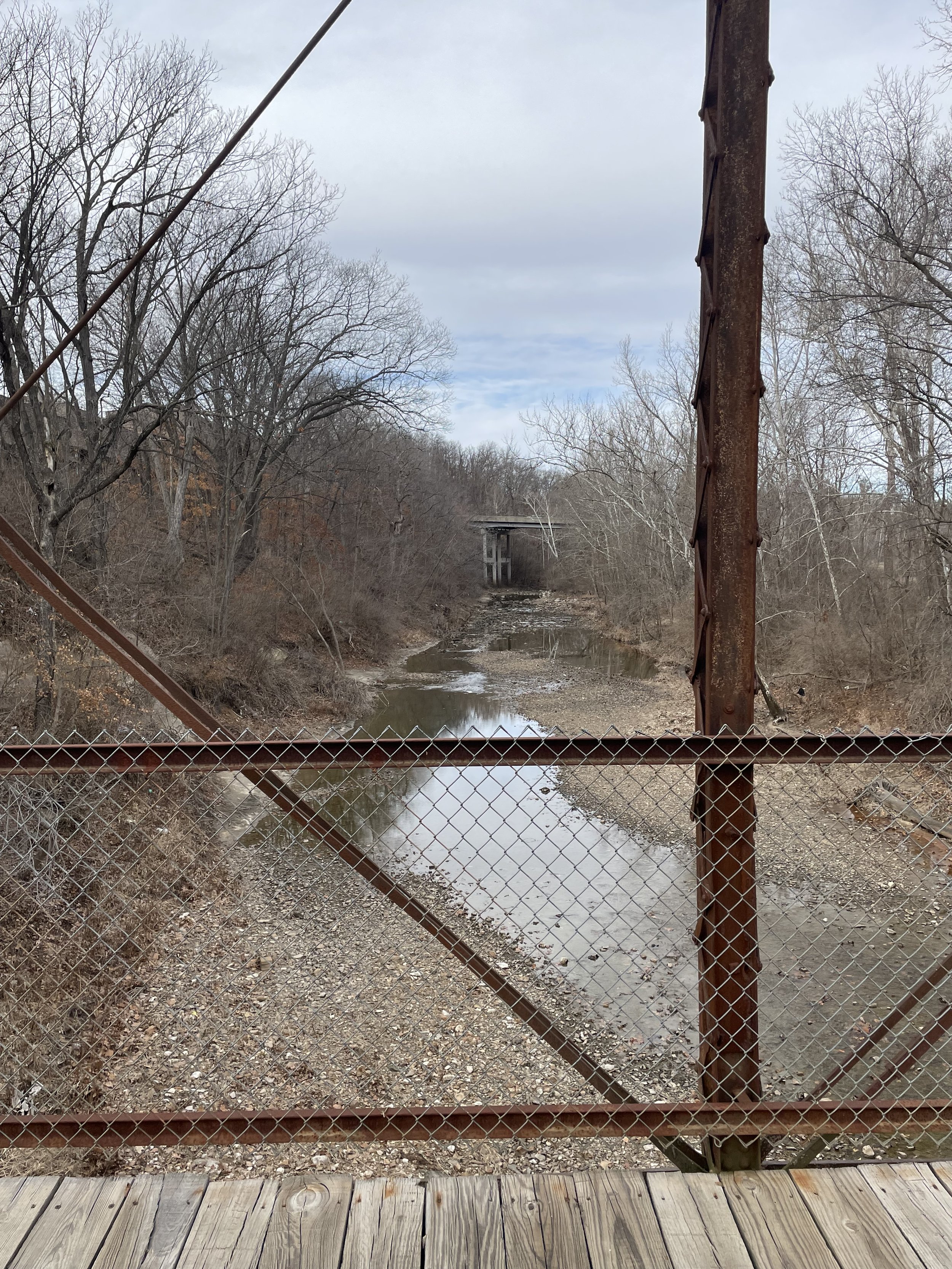Ashland Gravel Road And The Hinkson Creek Bridge
On February 7, 1973, the Columbia Missourian reported that the old Hinkson Creek Bridge was permanently closed to motor vehicles and would likely be preserved as a historic site and pedestrian crossing. It is at the site of the original crossing of Ashland Gravel Road over Hinkson Creek and was built in 1888 by H.W. Sebastian & Co to replace an earlier wooden bridge. Ashland Gravel Road was the main route to the town of Ashland and beyond to Jefferson City. According to the Missourian the 1912 Scarborough’s Motor Guide to Missouri describes the route:
“ ‘To get from downtown Columbia to Jefferson City, go south on Eighth Street. Turn left. Jog right. Stop at the toll booth. Cross a steel bridge. Turn right past an unpainted barn, etc., etc. The book describes Ashland Gravel Road as "rough and hilly.’ It wasn't an interstate, but, for a long time it was the only road to Jefferson City.”
Ashland Gravel Road was originally known as the Columbia and Jefferson City Gravel Road Company and was constructed as a private toll road in the 1860s. John Machir, Boyle Gordon, Michael Fisher, Thos. H. Hickman were among the charter members. The road originally went all the way to Claysville, but the southern section between Ashland and Claysville was eventually abandoned. The section between Columbia and Ashland operated for some years until the introduction of a more direct (and paved) highway system in the 1900s.
The 1888 one lane wrought iron “Pratt through” truss bridge was supplanted by the extension of Stadium Boulevard in 1967, which included a four lane bridge, a bit north of the old crossing. For a few years the old bridge was still used as a shortcut by neighborhood residents and businesses, but it was permanently closed to motor vehicles in 1973 on the city’s orders. Public Works Director Ray Beck, proposed a plan to preserve the bridge as a historic site and pedestrian/bicycle crossing. He proposed the bridge be cleaned, patched, safety features added, and landscaped. In 2023, the bridge still stands, relatively hidden, and is used as a pedestrian and bicycle short cut between Ashland Gravel Road and Old 63. It is 135 years old.
The Hinkson Creek Bridge On Ashland Gravel Road
Taken by Matt Fetterly on February 7, 2023
H.W. Sebastian & Co Builders, St. Louis, Mo
Taken by Matt Fetterly February 7, 2023
The “New” Stadium Bridge from the Old Bridge
Taken by Matt Fetterly on February 7, 2023
Inspired by the preservation of a 135 year old bridge, our group, CoMo Preservation, hopes to help homeowners, landlords, and institutions prevent the destruction of historic architecture. Original period styles might be replicated, but will forever lack the social history of authentic structures. The preservation of historic bridges is necessary for Columbia’s residents, students, and visitors to achieve a sense of place and, it follows, for our city’s continued economic success. If you want to join us in our mission sign up for our mailing list to receive news and updates.
Sources:
Switzler, William F. (1882). History of Boone County. St. Louis, Missouri: Western Historical Company. OCLC 2881554.
Williams, Walter (1913). A History of Northeast Missouri. United States: Lewis Publishing Company. ISBN 9780722207567
Hargrove, Bill (February 7, 1973). Bridge On Ashland Gravel Saved From Destruction. Columbia, Missouri: Columbia Missourian. Archived at Missouri Digital Heritage. Accessed February 7, 2023.
Do you have ideas for future topics? Interested in writing an entry or sharing a photo? Did you notice an error? Email CoMoPreservation@gmail.com or leave a comment below.



